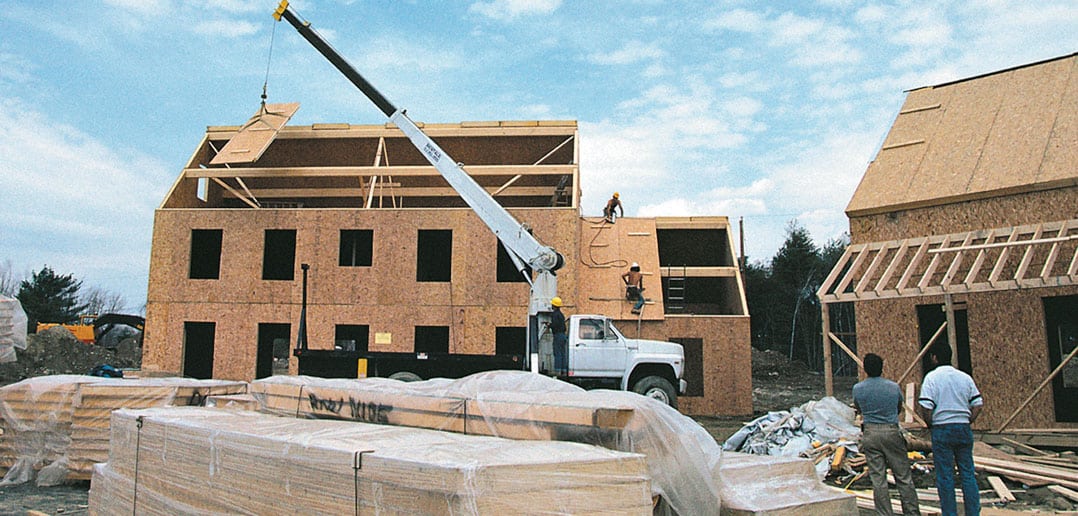Constructing a new residence is an thrilling journey that offers the chance to see your perfect house come to life. From choosing the ideal lot to choosing the design aspects that express your personal style, each part of the process plays a key role in creating a place that appears like home. As an increasing number of individuals turn to new construction rather than buying existing properties, understanding the intricacies involved becomes crucial.
This guide will deliver guidance into different factors of new home construction, including schedules, financial considerations, and decor trends for 2025. By looking into topics like connected home features, eco-friendly designs, and picking the best materials, you will be able to make knowledgeable decisions that enhance space and enhance functionality in your updated space. If you're a first-time builder or an veteran homeowner looking to make a change, the insights shared here will help you navigate the thrilling world of new home construction with assurance.
Planning & Blueprinting
The planning and blueprinting phase is crucial when building your new home. This is the stage where you translate your vision into a concrete blueprint. Start by assessing your lifestyle needs, such as the number of bedrooms, bathrooms, and any additional spaces like a home office or gym. Collaborating with an architect or designer early in the process can provide valuable insights and help you create a floor plan that optimizes space and functionality.

As you define your design preferences, consider current trends and future needs. Top design trends for new homes in 2025 focus on sustainability, open spaces, and smart technology inclusion. Emphasizing energy-efficient features and flexible areas can improve your living experience while keeping utility costs low. Make more info here of your must-have elements and rank them to make sure your design reflects your personal style while not compromising practicality.
Moreover, selecting the right materials and construction choices is crucial for both aesthetics and durability. Investigate various options such as brick, wood, or stucco for your exterior, and think about incorporating green building materials that promote environmental responsibility. Balancing your design desires with realistic budgeting will set the foundation for a effective home building process, ensuring that your new space is both beautiful but also eco-friendly and cost-effective.
Components & Building Options
Choosing the best materials for your new dwelling is crucial for durability, appearance, and future worth. Common materials include wood, brick, and plaster, each offering different advantages. Wood offers a traditional appearance and great thermal resistance characteristics, while brick is known for its minimal maintenance and power efficiency. Plaster, on the other hand, offers a smooth, modern appearance and is excellent for temperate environments. Analyze your local climate, care likes, and aesthetic goal to find the best fit for your home.
The choice of construction methods also holds a critical part in the overall quality of your home. Conventional stick-frame construction is well-liked for its flexibility and affordability, while steel framing gives improved strength and resilience. Additionally, emerging techniques such as insulated concrete forms (ICFs) provide excellent power efficiency and heat control. Research these choices and talk with your home builder to synchronize your construction technique with your planning goals and cost expectations.
Finally, the pros of sustainable building resources cannot be dismissed. Sustainable options, such as sustainably sourced timber and recycled resources, not only minimize your house's carbon footprint but also contribute to a healthier living space. Putting money in in energy-efficient windows and insulation can dramatically reduce utility bills and boost comfort. As you make choices about resources and building options, reflect about both immediate needs and long-term viability to boost the benefit of your new dwelling.
Financing & Cost Management
Funding a new home construction involves understanding multiple loan options and budgeting techniques to ensure a smooth process. Conventional mortgages may not cover the entire building phase, so construction loans are well-liked. These loans typically provide funds in stages, corresponding with building progress. Southern Highlands NSW Builder is important to shop around for good interest rates and terms that fit your monetary situation. Working with a mortgage broker can help you navigate the options and discover the best solution for your needs.
Budgeting for a new home construction requires meticulous planning and prioritization of expenses. Start by estimating the overall cost of construction, including land purchase, materials, labor, and permits. Allocate a portion for unexpected expenses, as hidden costs can occur during the construction process. Assess where to save by selecting cost-effective materials and where to invest on features that enhance your home's worth and comfort. Creating a comprehensive budget plan will keep expenditures in check and help you avoid going over budget.
Recognizing the hidden costs of modern home construction is essential for efficient financial planning. These costs can include service connection fees, landscaping, and extra permits that might not be factored into the initial estimates. To avoid shocks, conduct in-depth research and seek advice from knowledgeable builders and financial experts. By being proactive, you can ensure that your dream home is built within your budget without diluting on quality or your dream.
